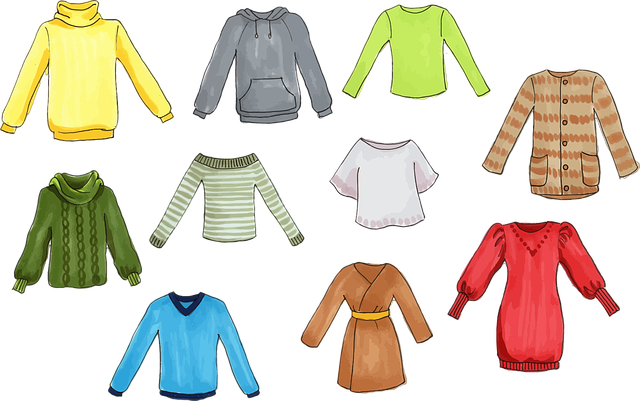Kayli Worden, Skylar Trostinsky, Julia Hixon, Abigail Kavoc, Michael Passaglia, Sophia Pearson, Ava Hallin, Emily Martinez
When it comes to dress codes in our society, there have been numerous ‘rules’ that have been placed with clothing based on the stereotypes and cliches of gender. Our group has come together to question these societal norms by examining the different ways that dress codes affect our everyday lives despite gender, race, age, and religious belief.
Specifically, we will explore what pieces are seen as inappropriate for educational institutions, the workplace, and in public places between sexes. Dress codes, in all aspects, have further enhanced the differences between sexes and do not allow room for people to express their gender identity through clothing.
History and Evolution
Whether it’s women being told to be modest and wear skirts down to their toes or men being forced to wear business attire outside the home to show honor and high value in the 1800s, societal ‘dress codes’ have been around for ages and continue to change decade after decade. In recent years, this ideology of what clothing can be accepted between the sexes/genders has followed its way into school and work institutions. Even though generations are evolving and people are becoming more accepting, society is still insinuating outdated ideas of clothing being tied to a specific sex/gender.
However, this issue of constructing gender norms based on clothing goes way beyond just school and work. People are categorized every day and are told they are either masculine or feminine solely based on the clothing they put on their bodies.
Social Media and Rules
There is no question that the gender norms that we see all around us are heavily influenced by the media. We see magazine articles with style guides telling us what to wear to work that literally tells you what is ‘work appropriate’ or in, other words, ‘business casual’. We also often see men wearing suits at work on TV shows. Not only do we see this kind of influence on ads, magazines, and television, social media is another media outlet for dress code norms. We see many celebrities who will always decide what the newest and hottest trends are. Nowadays, there are social media influencers whose job is to literally influence society on what we should wear to be considered ‘hip’.
Growing up, girls are trained to wear skirts and dresses while boys are told they can’t wear pink since it has been taught to us as a society that pink is strictly a symbol of femininity. The idea of telling a young girl or boy what they can and cannot wear is a harmful practice that further enforces the idea of gender being disjointed and non-cohesive. In our related blog posts, we will discuss how educational institutions, the workplace, and society itself have set guidelines for dress codes and how these strict rules are doing more harm than good.
The areas our group will explore are the following:
- Dress codes in celebrities – how celebrities feel the impact of this judgment from mass media outlets.
- Dress codes in schools – how institutions are a starting point for what is right and wrong for people to wear.
- Dress codes in the work environment – business dictates whether a man or a woman is professional or skilled enough for their working environment.
- Dress codes in adulthood and in children – how the idea of color scheme is based on a baby’s gender and dress codes exist in all ages.
- Rape culture – the role dress code plays in belittling a victim’s side.
Activism
Acknowledging that this is a societal issue is the first step for change. Highlighting the impacts that dress codes make on people of different genders, different shapes, and sizes and in different environments brings awareness to the fact that this is a matter that should not be taken lightly.
Specifically, an easy way to take action is by reading and sharing our posts. Whether it’s with a friend, family member, or classmate – spreading awareness and information brings attention to a topic that many don’t consider to be an issue in people’s lives all over the globe.
If you or one of your peers has experienced the unfairness of dress codes then talk about it. Some people do not know that change can happen. Encouraging everyone to speak out about the treatment that they have seen can make a big impact.
Another way we hope to see this matter change is by having institutions and places that encourage dress codes to acknowledge that this prejudice exists. Prejudice against women, men, transgenders, people of different sexual orientation, and much more.
We aim to recognize the seriousness of dress codes in everyday life and expose the various roots of this topic.
Additional References:
https://www.nationaleatingdisorders.org/blog/dress-codes-are-body-shaming-and-sexist
Student, Pooja Patel shares her first experience being dress coded as a twelve-year-old and her thoughts on how dress coding is “body shaming and sexist.”
http://www.reflector-online.com/opinion/article_444c3928-437c-11e8-af5c-a3824a8ca583.html
This article focuses on the emphasis of individuality and how putting a dress code on people, especially young people, should not be reprimanded for expressing themselves.
This book, “Dress Codes: Meaning and Messages in American Culture,” looks into the history of American fashion and analyzes the meaning of clothing in American culture.
A look into how well known and adored celebrity Rihanna, broke dress codes in high school herself to express her uniqueness.
https://www.ft.com/content/c7ff22ee-4e6f-11ea-95a0-43d18ec715f5
News article highlighting law firms that are getting rid of dress codes and eliminating the use “Dear Sirs,” in court to “shake off the sector’s fusty image.”
An article discusses whether dress codes are a good idea and prompts questions for students to answer.

